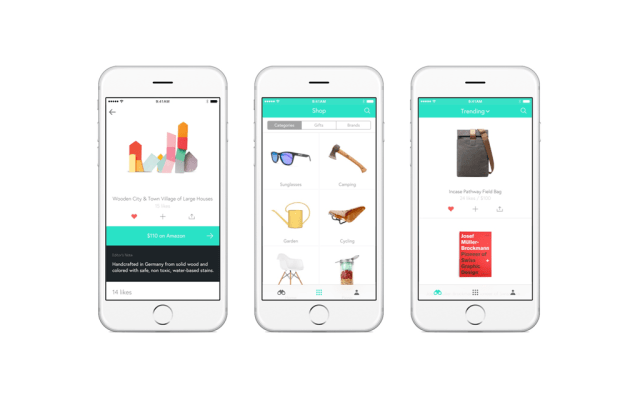A company called Canopy launched last year to bring a more curated and community-driven experience to shopping Amazon products, with an organized catalog of recommended items, and a number of tools for finding and saving favorites. Today, Canopy is bringing that same experience to mobile with the launch of the Canopy iOS application.
Like its web-based counterpart, the iOS app offers a cleaner, uncluttered interface for its shopping service – a big difference from Amazon.com itself. In its community, you can browse through products recommended by other users, see what’s trending, shop by category or brand, or even shop by personality type – the latter something that may come in handy as you struggle with your holiday shopping needs.
Meanwhile, as you find products you like you can add these to collections within the app, which can later be accessed under your Profile section.
Essentially, the service is like having a layer of curation overtop the massive Amazon.com catalog, presented in a more modern, almost Pinterest-like format. You can also follow Canopy editors and others users whose recommendations you like to better refine the experience.
That can be helpful when it comes to getting recommendations, since Amazon’s own algorithms are stuck showing you new products based on those you previously browsed, searched for, or purchased. That doesn’t always make sense because Amazon accounts are often shared among families and used to buy gifts – meaning an account history is not necessarily a reflection of personal taste. Unfortunately, that’s all Amazon has to go on. Canopy offers an alternative.
Built by a small team of four based in both San Francisco and Toronto, Canopy has seen around 22% average weekly growth in traffic over the past six months, says co-founder and CEO Brian Armstrong, and 35% weekly growth in gross revenue. (The company declined to go into detail on customer numbers or revenue figures, however.)
Currently, Canopy makes money via affiliate fees, not product placements or ads, which has allowed the company to bootstrap its service to where it is today.
[gallery ids="1087988,1087989,1087990,1087991,1087992"]
Though the company first launched on the web, Armstrong says he doesn’t think of the Canopy in terms of web-first or mobile-first, but is rather working to bring Canopy on iOS to feature parity with the web. However, some features will launch first on mobile and others will initially arrive online.
For example, the desktop was updated with a “Featured” pages that offers the team’s favorites along with editor’s notes. However, multiple products images will likely come to iOS first, before they arrive online. But, adds Armstrong, “ultimately, we’re trying to create one a beautiful, unified experience, so a user can transition seamlessly from iOS to web or web to iOS.”
Going forward, he says Canopy will focus on giving brands a “more expressive” home on Canopy, as well as expanding beyond the U.S. to respond to interest it has seen from regional Amazon sites in the U.K., Canada and Germany. Android support is also on the longer-term roadmap as is full optimization for iPad, and an iOS update that brings the “Featured” functionality to the app.
The new Canopy app is a free download here on iTunes.
